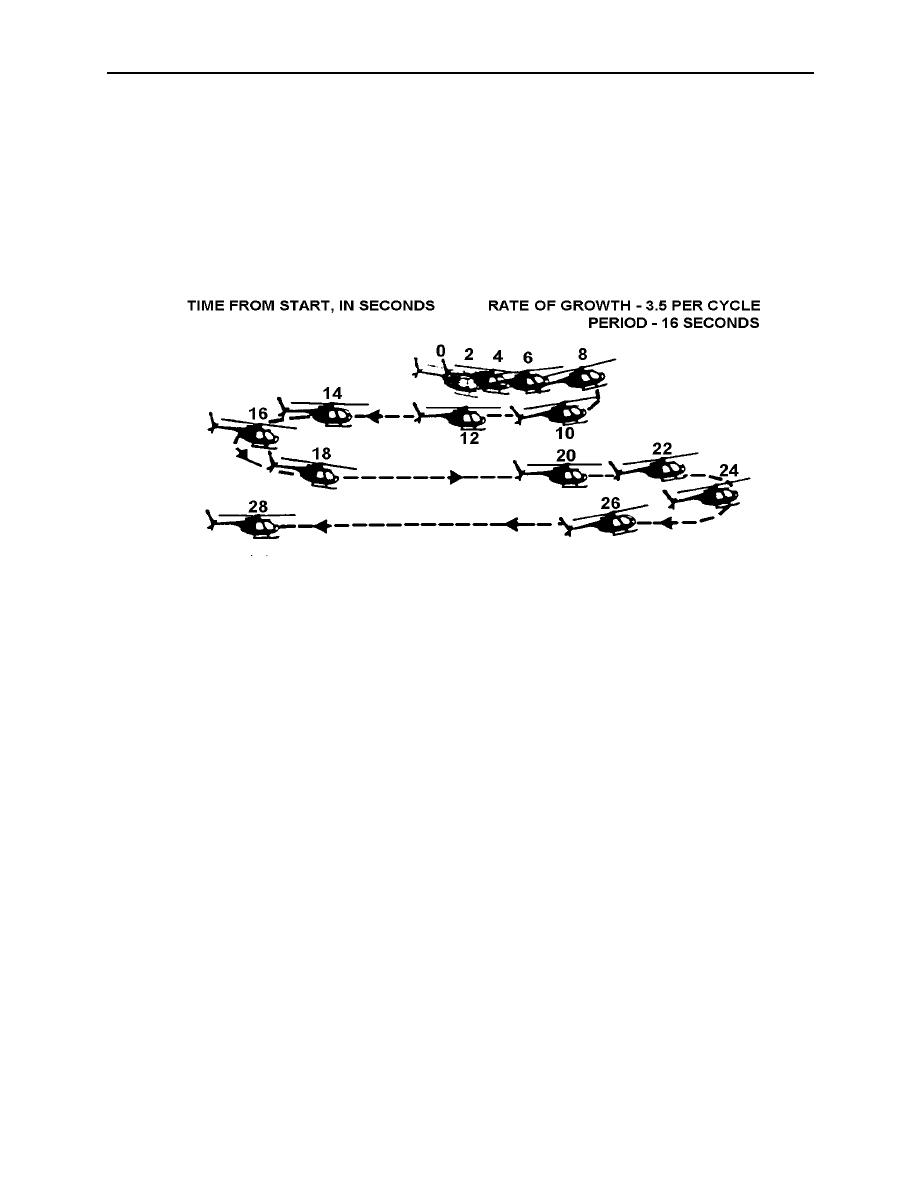 |
|||
|
|
|||
|
|
|||
| ||||||||||
|
|  CHAPTER 3
HELICOPTER AERODYNAMICS WORKBOOK
This misalignment of the axes is a principal cause of pilot instability during helicopter flight.
Because the results of cyclic inputs are not manifested in instantaneous fuselage attitude changes,
there is a tendency for pilots to initiate corrections with excessively large inputs. As the fuselage
catches up with the tip-path-plane, the pilot realizes the gravity of his error and attempts to
correct with an equal and opposite input, creating the same problem in another direction. Called
"pilot-induced oscillation," this situation can be described as "getting behind the motion." Since
this phenomenon is unpredictable and does not always occur, the best advice to a pilot in this
situation is: relax for a second and let the aircraft settle down (figure 3-10).
Figure 3-10
The center of gravity (CG) is considered the balancing point of a body for weight and
balance purposes. The CG is determined by summing moments about a datum and dividing by
the weight. In the case of the TH-57, the datum is defined as the nose of the helicopter, and the
moment arms are measured in inches behind the nose of the aircraft. A moment is determined by
multiplying the moment arm (inches) by the weight in that particular area (passengers, fuel,
baggage, etc.). Once the moments are summed, the sum is divided by the total weight, and this
quotient will be the arm of the CG behind the nose in inches.
When the CG is not aligned with the mechanical axis, the cyclic control must be sufficiently
displaced to compensate the unbalanced CG condition. The helicopter fuselage will be tilted so
that the heaviest end or side will be lower in a hover. Changing the CG of the aircraft will
require the cyclic control to be repositioned. If cargo, fuel, or personnel are loaded or unloaded,
the new CG will require compensating cyclic. An aft CG will require forward cyclic and
forward CG will require aft cyclic. Corresponding movements would be required for lateral CG
displacements. The limit of cyclic authority plays the most important role in determining the CG
limits of a helicopter. However, full displacement of the cyclic does not define the limit; the
limit must be maintained within the cyclic authority to ensure adequate control and a margin of
safety.
If the safe CG limits are exceeded, the aircraft will enter uncontrollable flight. Full cyclic
displacement will be unable to compensate for the extreme CG, and the aircraft will roll or pitch
in the direction of the extreme CG, likely resulting in aircraft damage or destruction.
3-10 HELICOPTER POWERED FLIGHT ANALYSIS
|
|
Privacy Statement - Press Release - Copyright Information. - Contact Us |